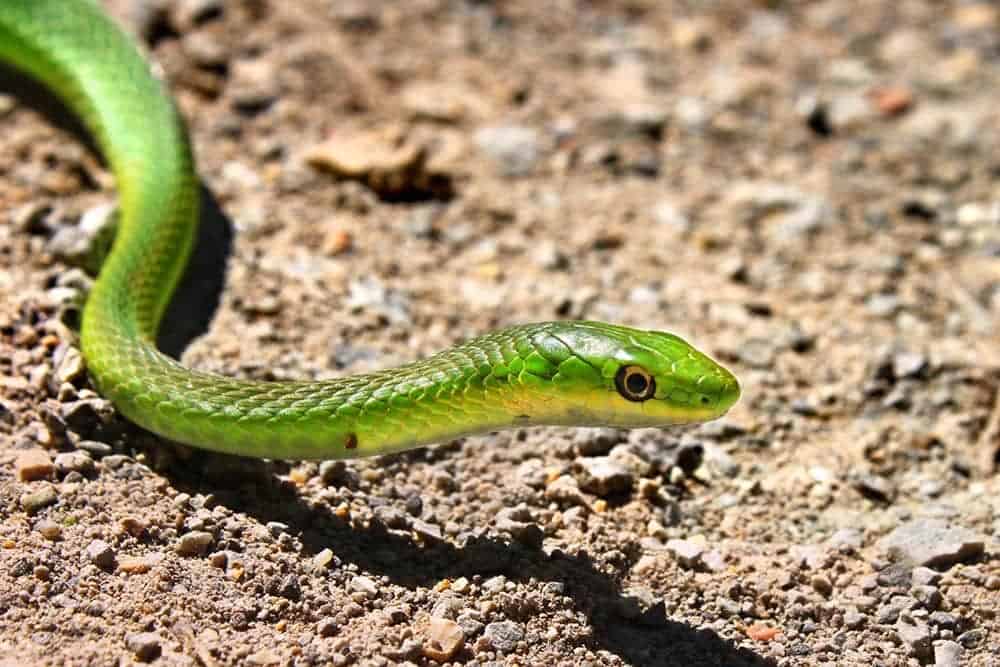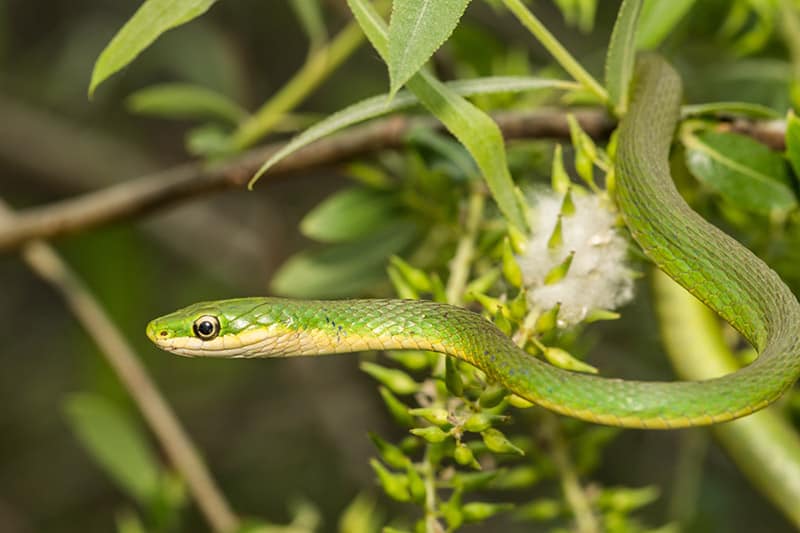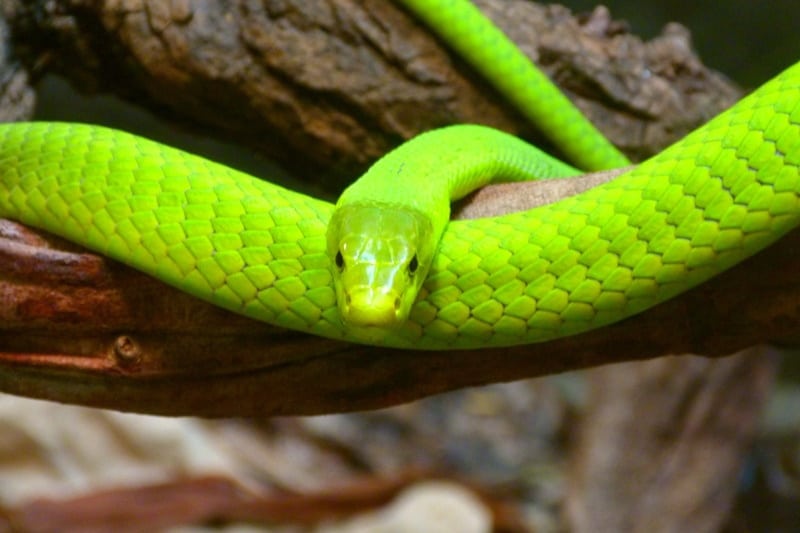The beautiful Rough Green Snake is not only lovely to look at, but is so very gentle that it is a pleasure to handle!
The Rough Green Snake is and excellent climbers and very agile, but they are also quite wiggly. They never display a bad temper and rarely if ever, attempt to bite. Despite their pleasant temperment they are a more difficult snake to maintain in captivity, and are suggested for a more advanced snake keeper.
- For more information on keeping Snakes see: Guide to a Happy, Healthy Herptile
Scientific Classification
| Kingdom: | Animalia |
| Phylum: | Chordata |
| Class: | Reptilia |
| Order: | Squamata |
| Family: | Colubridae |
| Genus: | Opheodrys |
| Species: | aestivus |
Distribution
The Rough Green Snakes are found in North America. Specifically, they are found in the eastern part of the United States; Connecticut to Florida, the Gulf States, and the Mississippi Valley to Kansas, Illinois and Ohio.

Description
The Rough Green Snake is slender with keeled scales and a very long tail that tapers sharply to a pointed tip. They can reach up to 28″ (71 cm). Void of patterning, this snake’s coloring is iridescent leaf green on top with whitish to yellow to yellowish green underneath.
Feeding
They should be feed live insects once or twice a week. Good insects to feed are crickets and moths. Soft-bodied insect larvae such as waxworms, butterworms, and mealworms are also good choices. Fresh water in a shallow dish should always be available.
Environment
The rough green snake is an excellent climber and likes an arboreal type setting, so a vertical or semi-vertical tree limb with plant vining is great. The terrarium should be at least a 10″x14″x10″. See Basic Reptile and Amphibian Care for more information.

Temperature and Lighting requirements
They do well in 70° to 80° F with moderate humidity. Lighting requirements are minimal, they do not need full spectrum lighting though it is good for long term maintenance as it helps them feel good. You can use a substrate heating device for basic heating. For additional heat, you can add a full spectrum incandescent daytime bulb and a blacklight bulb or red incandescent bulb for nighttime heating. Be sure you use a thermometer so you don’t let the terrarium become overheated!
- For more detailed information see the Basic Reptile and Amphibian Care: Housing.
Breeding/Reproduction
These snakes lay four to twelve very elongated eggs. They will be deposited under a flat stone or a log, usually at the edge of the woods, where it meets a meadow. The young can be a grayish green to a pale delicate green at first, becoming the beautiful iridescent leaf green as they mature.
Availability
Though the Rough Green Snake is generally available, they can be difficult to maintain in captivity. This is thought to be because we don’t fully understand their natural diet. A variety of foods is probably best.
Featured Image Credit: Pxfuel
